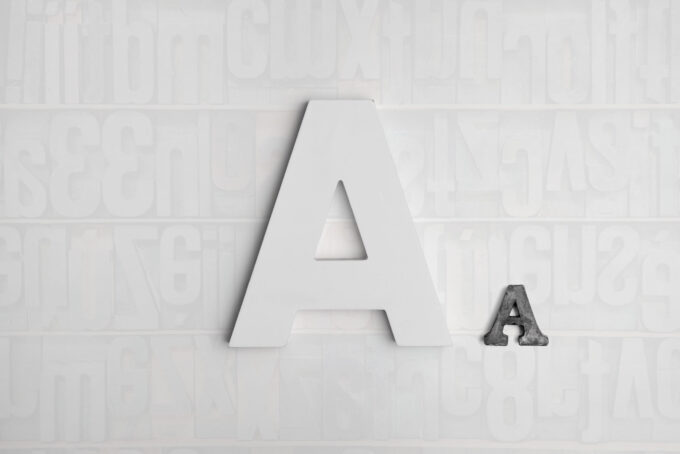We often use the terms “font” and “typeface” interchangeably. However, these two words have distinct meanings in the realm of typography, rooted in a rich history dating back to the invention of the printing press.
Typography: The Basics
Typography is the art and technique of arranging type to make written language legible and visually appealing. Understanding fonts and typefaces is fundamental to this art.
Typeface: The Style of Text
The term “typeface” refers to the design and style of the characters. It encompasses everything from the shape, thickness, and overall aesthetic of the letters. Classic examples of typefaces include Times New Roman, Arial, and Helvetica.
The history of typefaces dates back to Johannes Gutenberg’s invention of the printing press in the 15th century. Gutenberg’s press featured movable type, allowing printers to swap out individual letters and characters. Each set of characters created was a distinct typeface, reflecting the design and style choices made by the type designer.
Font: More Than Just Size
On the other hand, a “font” refers to the specific size and weight of a typeface. For instance, Times New Roman in 12-point bold is a different font from Times New Roman in 14-point italic.
The confusion between fonts and typefaces has been exacerbated by digital word processors like Microsoft Word. These programs often place the term “font” next to the style selector, making it seem like “font” is synonymous with style. This misplacement has contributed to the modern misuse of the term.
TrueType (TTF) and OpenType (OTF)
Two major font formats, TrueType (TTF) and OpenType (OTF), have emerged in the digital age. TrueType fonts were invented by Apple and later embraced by Microsoft. OpenType, a successor to TrueType, was developed by Adobe and Microsoft. OTF fonts were designed to overcome the limitations of TTF fonts. They include advanced typographic features and support for multiple languages. The development of OTF fonts was partly a response to copyright concerns. TTF fonts were easily copied, leading to copyright violations, while OTF fonts used a more open and flexible format.
Web Fonts: A Digital Revolution
In the era of the internet, web fonts have become a pivotal component of web design. Popular sources like Google Fonts offer a vast array of free, high-quality fonts that web designers can easily integrate into their websites. These web fonts are designed to load efficiently in browsers, ensuring a consistent and visually appealing reading experience.
For those seeking more specialized or unique typefaces, licensed paid sources provide an extensive selection. These paid fonts often come with additional support and features, making them suitable for professional design projects.
Furthermore, website owners have the option to host their own font files, granting them complete control over typography choices. This approach can be ideal for branding and ensuring design consistency. However, it requires a good understanding of web font optimization and licensing considerations.
In conclusion, understanding the terminology and history of fonts and typefaces is essential for anyone involved in design and publishing. Additionally, the evolution of font formats and the advent of web fonts have transformed typography in the digital age, offering a plethora of choices and opportunities for creative expression in the online world.



